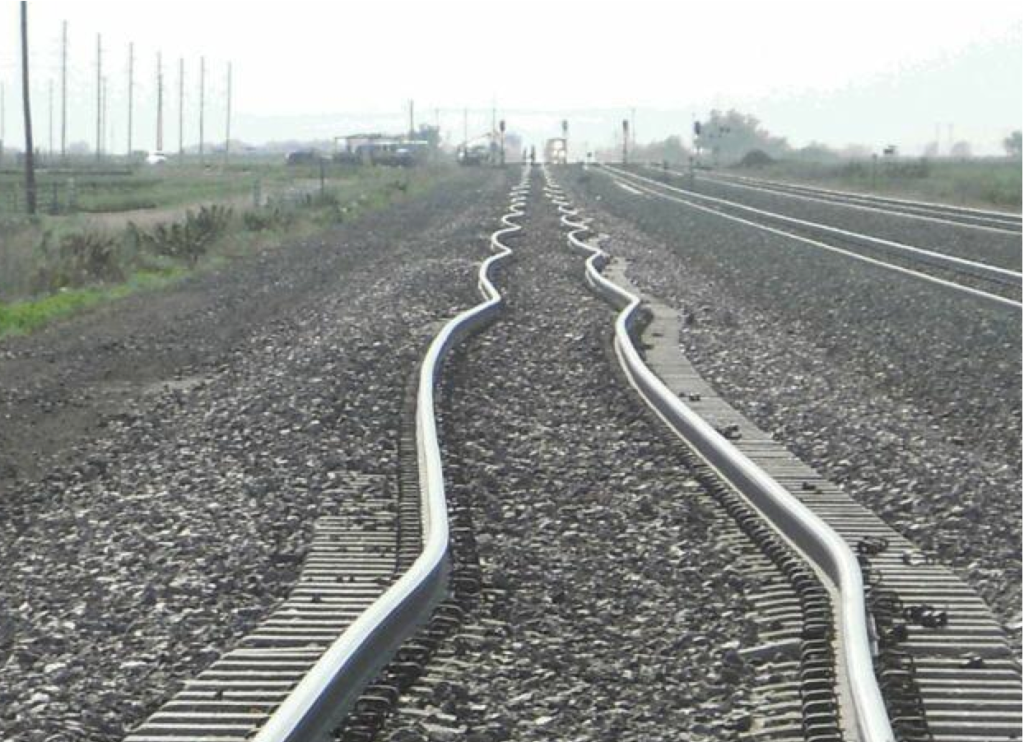Crash Course on Refractory Products for a New Plant Manager
Refractory products are often called the “backbone of industry” because they’re used during the heat and chemical processing of all commodities. Our buildings, transportation infrastructure, autos, utilities and thousands of other products couldn’t be created without them.
Refractory products provide:
- Protection of capital investments – Industrial heat processing equipment such as boilers, kilns, furnaces, incinerators, gasifiers and dryers can be multi-million dollar investments. Refractory products protect them from thermal damage and can extend their lifespan, and thus the return on capital invested in them.
- Protection for workers – Refractory products also play a significant role in protecting industrial workers from serious or fatal injuries. Industrial heat processes can routinely create temperatures in excess of 2,500 degrees Fahrenheit and are used to protect workers from extremely dangerous heat conditions.
- Protection against lost production – When heat processing equipment requires maintenance or worse yet, fails, factory downtime can create significant sales losses. For some plants, one day of downtime can cost the company over a million dollars in revenue. The proper choice of refractory products can serve as an insurance policy against downtime.
During the heyday of manufacturing the U.S. in the mid 20th century, engineering departments at many universities provided specialized classes to train future plant managers about the nuances of refractory materials and application processes. However, in today’s curriculum, far fewer engineering programs are teaching the material that was commonplace in previous generations.
That’s forcing new engineering managers, maintenance managers and industrial design engineers to learn on the job or rely on outside experts. Innovations in our industry have created new materials that, in the right applications, provide better protection and return on investment than many of the traditional refractory materials. But these new materials aren’t always the right solution for specific applications and can make your decisions more complicated.
This article is focused on giving you, a new maintenance or engineering manager, the most important high-level knowledge about refractory materials. We’ve organized the content into seven main categories:
- Refractory Product Types
- Refractory Installation Methods
- Choosing the Best Refractory Material
- Refractory Maintenance
- Refractory Costs
- Refractory Contractors
- Common Misconceptions About Refractory Products
The content is based on our experience as a refractory contractor since 1946 and full service distributor. We’ve experienced just about every type of job imaginable, and hope you find value in these experiences and our recommendations.
1. Refractory Product Types

Refractory products are not standardized. There are very general classifications of refractory product types, including:
- Fireclay and high alumina refractory bricks
- Fireclay and high alumina plastic refractories and ramming mixes
- Zircon refractories
- Silica refractory brick
- Castable refractories, alumina and alumino-silicate
- Chrome, chrome-magnesite, magnesite-chrome and magnesite brick
- Insulating firebrick
Within these general, high-level classifications, there are a multitude of different combinations, including variations based on chemical content, weight, PCE value and modulus of rupture value.
Temperature
Different types of refractory products are designed for different temperatures. Think about the average and peak temperatures in your manufacturing processes. Refractory products are used with heating applications that generate temperatures over 1000°F all the way up to approximately 3000°F.
This leads to three different classifications of refractories based on temperature:
- Normal refractory – These are typically fire clay and are used for temperatures up to 1780°F, which cover processes such as melting aluminum
- High refractory – These are typically cromite-based refractories for temperatures from 1780 – 2000° F, which cover processes like melting copper
- Supersonic refractory – These are typically zirconia-based refractories for temperatures greater than 2000°F, which cover processes like melting iron
Size and Shape
Refractory products come in many different shapes and sizes and are dependent upon how they are going to be used.
Typically, refractories are going to be built using one of three different types of refractory materials:
- Bricks are going to be utilized in most furnaces
- Fiber blanks are used for linings
- Monolithic refractories are shaped depending upon how it is going to be used
Chemical Composition
Refractory products not only have to be heat-resistant, they also have to be resistant to the chemicals that will be released during the manufacturing process. There are many different types of materials that can be utilized in combination with one another to create refractories that can stand up to various chemical processes.
Refractory products are always going to be nonmetallic, as metallic refractories are not able to stand up to the high temperatures that most refractories must undergo. Natural materials are most commonly used, but synthetic materials can be added to the blend.
Careful consideration must be given to the chemical interaction between the refractory and the other materials being heated, since chemical breakdown in a refractory can cause catastrophic failure.
- Acidic refractories aren’t affected by acids and consist of acidic materials such as silica, alumina and fire clay. They are affected by basic materials though.
- Neutral refractories are used when the slags and atmosphere are either acidic or basic and they need to be chemically stable to both acids and bases. Alumina (Al2O3), chromia (Cr2O3) and carbon from the R203 group are typically used in neutral refractories.
- Basic refractories are used where the slags and atmosphere are basic. These are stable to alkaline materials but could react with acids. Magnesia is a very common example, along with dolomite and chrome-magnesia.
2. Refractory Installation Methods
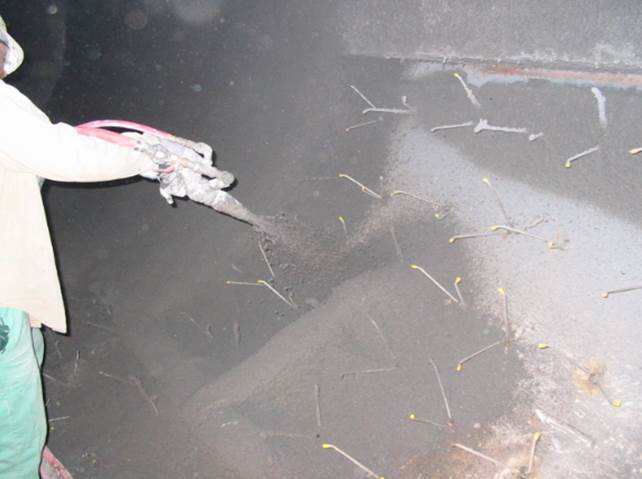
There are essentially four main installation methods for a monolithic refractory:
Casting
Casting is a fairly straightforward method of mixing and pouring (casting) wet castable into forms. The forms hold the castable in place until it’s set, and then they’re removed.
Pump Casting
Since refractory castable is fluid, most types of castable can also be pumped to the location where it’s needed. Typically, pneumatic truck or trailer-mounted line pumps equipped with pipe and hoses are used to convey large volumes of material to a specific location.
Gunite
Gunite is a dry monolithic refractory designed for use with dry gun equipment. It usually includes additives to make it stickier. Gunite is applied by a special machine that uses air to push the dry (or pre-dampened) gunite through a hose and to the target. Water (or additive) is added at the nozzle to moisten the dry mix so it sticks to the surface.
Shotcrete
Shotcrete is typically a low-cement, low-moisture refractory that is fully tempered and mixed with water (or special additives), and then applied through a machine that uses a piston pump and air to spray the wet material from a nozzle-like gunite.
Choosing the Right Method
Which one is the best for your project? Well, it depends.
When considering each method, think of them as tools in a toolbox. All methods may work; however, one method may be better for your current application, and another method might be better for a future application.
Assuming you’ve selected the best refractory for your specific application, consider each of the following elements and how they apply to your job:
Location and site conditions
Where in the furnace is the refractory being placed? Are there obstacles to go around, over or under? How high is the location for the application? Are you going to be starting and stopping often? Are you going to need to move the equipment around?
If you can set up right at the furnace, boiler etc., then casting may be the best method and usually provides the application with the best physical properties and the least potential equipment issues.
Installations at higher elevations have other considerations. In many applications, gunite is easier to use, especially at higher elevations, and the equipment and dry castable can usually fit in an elevator or be easily lifted to where it is needed. Pump casting and shotcrete can also be a good solution for high locations, if the pump has enough energy to get the material to the desired elevation, the pipe and hoses can reach the desired spot, and it can handle the volume of material needed.
In the right application and environment, shotcrete works extremely well. The advances in technology have increased dramatically in the last few years.
Environmental factors & installation equipment
How clean does the environment need to be around the application? Is dust a factor? Are there plant operational issues to consider? What types of safety requirements are required?
Although the general properties of each material may be similar, each castable is engineered to be installed via its respective method. That is to say, shotcrete material is engineered and manufactured to be installed via shotcrete, gunite material via gunite, etc. Some companies advertise their materials may be both cast in place or by gunite, but generally in practice most materials cannot be cross-installed with equal results.
Volume required
Pump casting and shotcrete can deliver greater volumes faster than regular casting or gunite; however, you must be prepared to accept the large volume of material, otherwise it doesn’t help you. Also, you have to consider waste. Gunite application is typically 2 to 5 tons an hour. Shotcrete is the fastest and can typically be applied at 5 tons (or more) an hour.
Storage conditions
The length of your job, quantity of materials, available storage for materials and the physical space required for the equipment and materials at the job site are also important factors.
Skill of installation team
Pump casting, gunite and shotcrete typically require more experience than casting. Is the contractor manning your project with company people or a crew of travelers?
Bake-out requirements
Many refractory materials have different bake-out (curing) schedules that can impact your overall project schedule. Don’t forget to consider this in planning your overall outage. You do not want to cut corners here!
Budget
The cost of the materials (assuming similar physical properties) is relatively equal, but the size of the project can affect the materials cost because of waste. For example, for pumping or shotcrete, waste doesn’t impact the materials cost in a job with 20 tons of material, because waste in the hose and pipe is insignificant. However, waste can be significant in a job requiring only a few tons of material – sometimes adding an additional 30% to 50% of material cost.
The main cost differentiators are equipment and labor. High-quality pump casting equipment is expensive. Shotcrete equipment is expensive, but the cost can be mitigated by the high volumes. Gunite equipment is relatively inexpensive and readily available.
In addition, pump casting and shotcrete both add the element of potential equipment issues that must be taken into consideration. An example might be turnarounds where more than one pump may be required on the job as a back-up, in case one pump goes down.
3. Choosing the Best Refractory Material
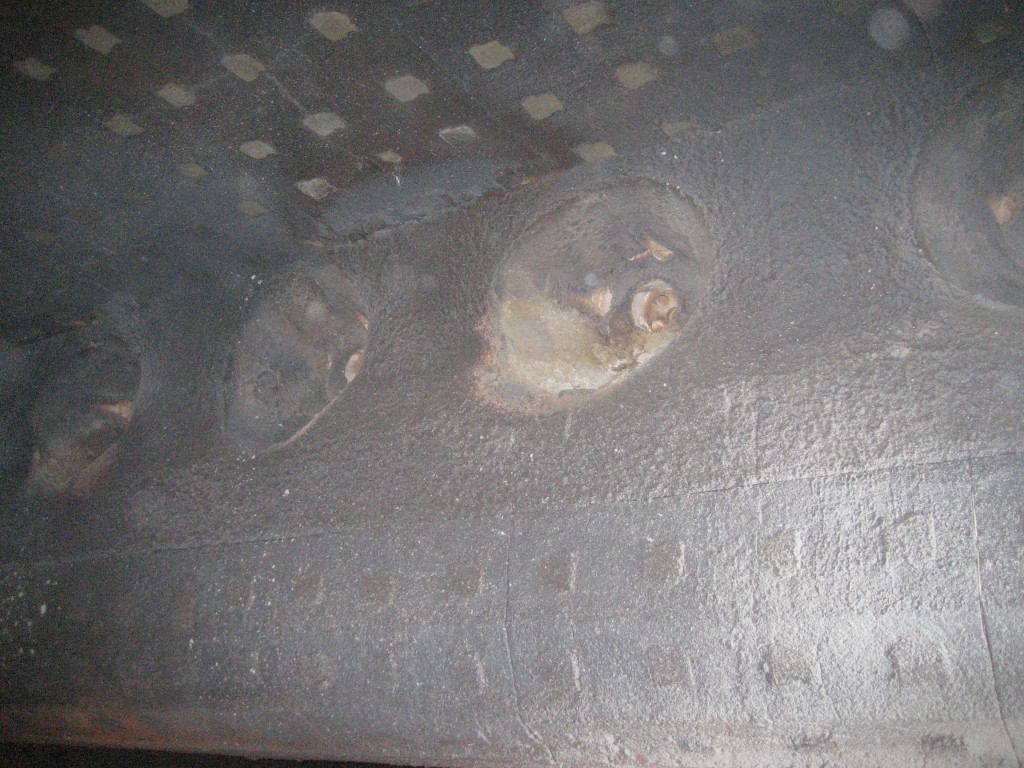
New refractory materials have recently come on to the market such as gunite and shotcrete technologies that incorporate colloidal silica or other similar binder systems.
We commonly hear engineering and maintenance managers tell us, “I want to use the latest technology” or “I want to use the best refractory material.” And in the right applications these are really good materials.
But in some cases, that’s a mistake. The rule is this:
The application drives the material selection
There’s no single “perfect” refractory material. There are many well-engineered refractory products that are ideal for some applications, but a poor fit for others.
The focus should be on the best material for the specific application. Because the application is what matters most – even more so than the material. Naturally time and cost come into play.
Here’s the refractory material selection process we recommend:
- Research your material options fully — particularly with regard to lifespan in your specific application.
- Be leery of contractors who focus on a single material or single application type. We call them one-dimensional contractors.
- Decide what you want to spend.
- Work with a team who understands a wide variety of materials and application methods to find the best material and price combination for you.
4. Refractory Maintenance
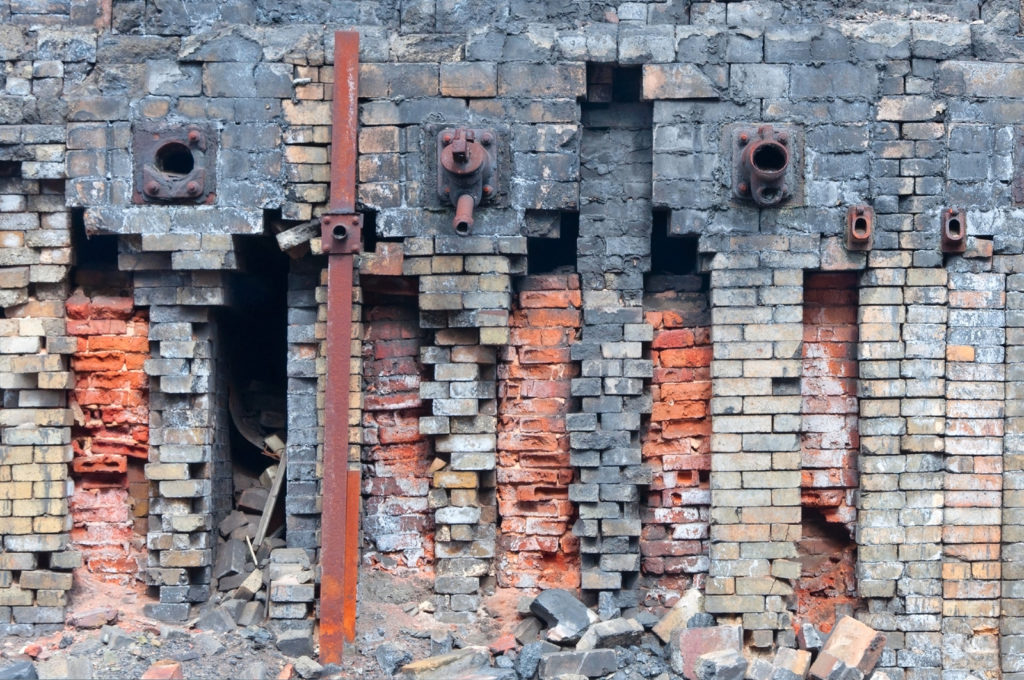
Refractories are consumable and must be replaced. They WILL wear out. They’re like the brakes or tires in your car – protecting you, until they fail. Understanding the maintenance and repair schedules of your refractories at installation will help extend their life and work to prevent accidents, downtime and equipment failure.
Different types of refractory lined equipment require different maintenance schedules. Unfortunately, the recommended maintenance activities and time intervals aren’t as simple as the 3 months/3,000-mile oil change recommendation for your car.
The best advice is to have a refractory engineer perform a physical inspection of your heat processing equipment and create a customized maintenance plan for your refractory type and installation method.
Cracks Are Normal … Most of the Time
Monolithic refractories will crack for a variety of reasons:
- Heating stresses
- Volume changes
- Expansion
- Substrate
- Vessel geometry
- Installation technique
Again, cracks from these reasons do not mean the refractory has failed. Generally speaking, most of the cracks we see in refractories are more of an aesthetic nature and not function.
“Bad” Cracks That Require Attention
The types of cracks that should be fixed immediately are larger cracks, typically greater than 3/8 of an inch (and anything you can stick your hand into). If the crack can cause the refractory to loosen or fall out, then heavy cycling can cause cracks to propagate as the slags/product get into the cracks and make them worse (ex: the crack contracts when cool, debris trickles into the crack, then on heat up the crack cannot fully close).
In that case operation, not installation, has more effect on the crack.
Refractory Failure
When a refractory failure occurs, the facility operators usually assume the cause is one of two things:
- Bad installation
- Bad materials
Improper installation is commonly the cause. After all, there is still the human element involved. And most of the time, faulty installation is fairly easy to determine. However, from our generations of experience and analysis, if the material has functioned properly for any reasonable length of time, generally the cause is not installation-related.
As far as bad materials go, while this is possible, it is not probable. Reputable refractory material manufacturers pay close attention to quality control (QC), material selection, mixing, packaging, etc. They can provide QC results throughout their process. Further, most refractory manufacturers source basic components from the same global suppliers who also provide QC results with their respective products.
So, if it’s not installation and it’s not materials, then what is the cause? Good question. If you’re truly interested in determining cause, you have to go back to the main factors involved:
- Design of furnace and/or process equipment
- Detail engineering
- Refractory material selection and specification
- Refractory anchor type, spacing and welding
- Installation of lining
- Dry-out (curing) of the refractory
- Start-up
- Operational practices
- Maintenance practices
Our experience shows that in the overwhelming majority of cases there is never one, definitive cause, but instead a “chain-of-events” that lead to the “failure.” In other words, there were multiple variables that impacted the refractory material in service.
Remember, the refractory material is only one component in the overall design of process equipment and industrial furnaces. It is sensitive to (and influenced by) time, temperature and operational factors.
In our experience, the culprit will likely be one (or a combination) of the following:
- Improper combustion (fuel, ratios, atmospheres, flow, etc.)
- Flame impingement (flame geometry, improper set-up, etc.)
- Improper furnace controls (PLC’s controls, circuitry, thermocouples, dampers, etc.)
- Operational change (cycling, throughput, load, etc.)
- Operational procedures
- Maintenance practices
- Shell and lining movement due to a difference in expansion rates
- Mechanical stresses
- Environmental factors
- Catalysts
From a refractory perspective, these all impact and can cause:
- Excessive temperatures (shrinking, etc.)
- Hot spots
- Excessive cracking due to spalling, thermal shock (a result of temperature fluctuations), mechanical shock or compressive forces, linear change, bending, etc.
- Structural issues
- Erosion and abrasion of the refractory lining
- Anchor failure
- Failure of the steel shell which supports the refractory
- Mechanical damage
All of the above can cause the refractory material to fail sooner than originally expected. As variables do change, the selection of the refractory used may need to be reconsidered. If there are new variables that the product must face, then an upgrade or change in material may be warranted.
5. Refractory Costs

When reviewing cost, remember this mantra:
Total cost is what matters, not individual unit prices
You can purchase refractory products from a distributor or direct from the manufacturer. There are two instances when buying direct from the manufacturer is typically going to cost less than buying from a distributor:
- If you’re purchasing a very high volume of refractory materials
- If you only need the specific refractory materials made by the manufacturer
Otherwise, it’s almost always cheaper to purchase your refractory from a distributor. Unlike a single manufacturer, a good distributor can procure the entire bill of material, including logistics. Most manufacturers can’t quote for what they don’t make. A distributor’s volume buying power gives us leverage in our relationships with manufacturers, allowing us to offer the same cost or less on the entire bill of material as any single manufacturer. (As stated earlier, we’re also a distributor.)
Total delivered cost is what matters most. You can get burned by freight, required purchase quantities and waste.
Here are the five things to remember when evaluating refractory product cost:
- Do not base your refractory decision solely on price. The “low price” option often produces the highest total cost.
- Make sure your bidders have ALL of the facts. That means explaining all the parameters and defining the scope of work clearly.
- Many people make the decision based on short-term factors because they won’t be there long enough to deal with the long-term problems from a “low price” decision. Have at least one long-term stakeholder involved in the decision.
- You cannot know all of the salient factors relating to refractory and installation. These affect price. Therefore, ask questions so that you better understand the criteria your bidders are using.
- If you’re really going to make your final decision based upon price:
- Take the time to prepare and provide a scope of work.
- Require that all bids MUST be based upon the same type of refractory with similar properties. Be specific.
- Make sure that you understand what installation technique is being used.
- Disclose ALL relevant factors.
6. Refractory Contractors
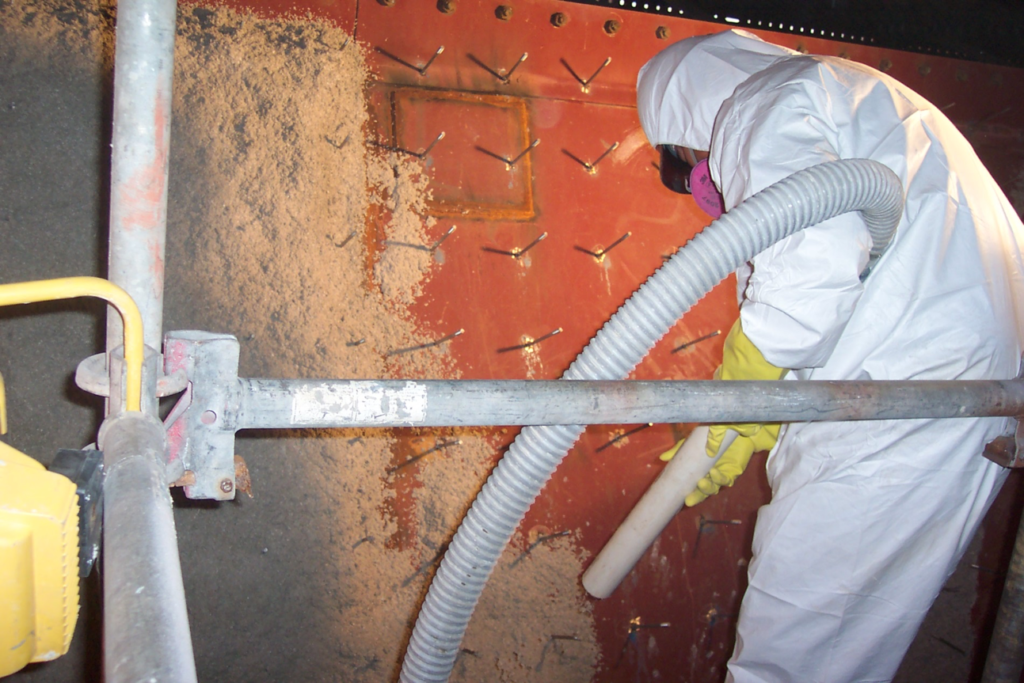
Choosing a refractory contractor isn’t always a simple job. Refractory products can be more complex than most realize — refractories are not a commodity, and refractory selection is not a “one size fits all” process.
Selecting and installing refractories is typically the lowest priority for maintenance managers or for manufacturing and plant engineers – refractories end up being the last thing on the Gantt chart or “To Do” list. But that doesn’t mean that they’re the least important.
It’s not uncommon for significant challenges to appear during a typical refractory installation project. These challenges can cause extended plant downtime, which can cost millions in lost production, and worse, safety issues.
Consider the following seven points to evaluate the balance between quality, initial job quote and total potential job costs.
- Track Record
Does your contractor have a quality track record? While the refractory contracting industry boasts a number of reputable players, it also is flooded with inexperienced newcomers and part-timers from other industries that jump into the business without proper resources or experience. Beware of the “taillight guarantee” – when support ends as the truck leaves your lot. The next time you call, these contractors may no longer be in business. Ask for a list of verifiable completed jobs across a number of different industries.
- Service and Support
What type of service and support will your contractor provide? Ask about technical/engineering support, research and development efforts, and other behind-the-scenes capabilities. Get a customer reference list with names and numbers and make some calls; there is no better gauge of a contractor’s worth than satisfied or disgruntled customers.
- Guarantees
Does your contractor stand behind his service and materials? With an eye on their own bottom lines, many less-reputable contractors buy the cheapest available materials. Refractory products should be matched carefully to the application, dependent on the type of furnace or processing unit, operating temperatures, exposure to abrasion, and a range of other variables. Some companies may not use what is necessarily the best for the job.
- On-Time Completion
Will the job get done on time? Whether refractory work occurs during planned or unplanned downtime, the person in charge of overseeing the project must ensure that operations are not interrupted for an extended period of time. Management and production personnel count on lining repair or replacement being completed in a timely fashion. Make sure your contractor has the resources, in both staff and installation techniques, to handle your project without disrupting your schedule.
- Safety Record
Does your contractor expose you to unknown liabilities? Just as some contractors cut bottom-line costs with low-grade materials, some may sacrifice safety for profits. This poses a threat to employees of both the contractor and the customer company, either through unsafe installation practices or exposure to hazardous materials. Review your contractor’s safety program. This should include comprehensive training for all employees, proper safety equipment, and knowledge of and strict adherence to environmental and safety regulations.
- Technical Expertise
Does your contractor know what is best for you? Refractories are not one-size-fits-all. What works for a furnace door jamb may not be the best material for a rotary kiln. Because plant engineers and maintenance personnel cannot be expected to keep pace with all refractory technologies, choose a contractor who is experienced and up-to-date on new products and the latest installation methods. These include hot-spot grouting, plastic refractory gunning, and castable pumping. For example, let’s say you begin experiencing numerous hot spots on a boiler or furnace wall but absolutely can’t afford to stop production for the length of time needed to make the necessary repairs. Can your contractor suggest temporary repair and sealing? Technology now exists with which hot-spots can be detected and repaired online with refractories that are injected through the wall. The material quickly hardens into an air-tight seal. While this process is temporary, such repair work can give old walls several extra months of efficient, cost-effective service until your company is able to conveniently schedule downtime for permanent rebuilding work.
- Total Lifetime Job Cost
Can you afford downtime later if the job isn’t done right now? Refractory repair and replacement does not end when your operation is on line and running again. It must last. Regardless of initial material and service price savings, recurring problems will invariably cost more than a premium job done right the first time. Again, the sure-fire test of a contractor’s mettle is the endorsements of past and present customers.
Reviewing Bids
If you’re a plant engineer or purchasing agent comparing bids with substantial variations in price, take an extra few moments to make sure each contractor’s bid meets all the project requirements.
Here are some things to look for:
- What is the make-up and experience level of the crew working on the job? Ask about the company men, brick-masons and temporary laborers.
- Do the contractor’s employees have a vested interest in the work? Or are they simply travelers? Employees with a vested interest in the success of every project will perform higher quality work.
- How much time does the contractor spend every year to make sure they are up to date on the latest safety protocol? (We spend 1 week per year, which is higher than the typical contractor, but make sure to ask the question.)
- What is the bake-out procedure and who will be performing it?
Here are tips to avoid getting fooled when reviewing your refractory contractor bid:
Comparing Apples to Oranges
This is common. We’re all busy. It’s human nature to quickly scan a proposal to find the total cost. When Vendor A’s quote is $500,000 and Vendor B’s quote is $510,000, Vendor A is commonly chosen, when Vendor A’s bid doesn’t match the elements of Vendor B’s bid. (And sometimes, Vendor B’s bid is truly lower). The bottom-line number is simply a summation of all of the components, so to avoid this trap, review each bid component and ask vendors to bid on identical services / products.
Underestimating Installation Time
Some of our customers have enough experience to properly estimate the job timing requirements, even though they are not contractors. Others don’t, and will tell us (or other vendors) what timeframe should be used to complete a job. This is challenging, because if we bid the time that the job will actually take, we’re stuck in the Apples to Oranges trap, and if we bid on the underestimate of time, the job won’t be completed safely.
Allowing the Contractor to be Vague
It’s common for some contractors to not specify which materials they’ll use during installation. When you see language like “We’re going to use a high-end castable,” or “anchors” ask which specific castable and which specific type of anchor? There are variances in costs and vagueness leads to the Apples and Oranges trap and can make a huge difference.
Not Factoring in All Costs
Unscrupulous contractors may leave out specific costs and try to sneak them in with change orders during the job. The best way to compare bids is to ensure that each vendor has addressed each item of the job, including freight FOB points, specific equipment requirements (is the forklift or air compressor necessary included or will this be a “change order”?), utility and connection requirements and who is responsible, disposal of debris, site-specific safety requirements and, most important, payment terms.
Selecting an Inappropriate Installation Method
There’s no perfect installation method, but there’s almost always the best installation method for a specific job. Selecting a lower-cost installation method that won’t last as long or causes potential safety issues almost always ends up costing you more over a 12-month or 24-month period.
Not Adhering to Deadlines
Having deadlines on your RFP is a good way to start a working relationship with a new vendor. It’s easy for contractors to provide price sheets or vague cost estimates, but it takes time and resources to prepare a properly-designed solution for a big job. If your contractor invests the resources to meet your deadline, that shows their respect for your timelines and a desire to win the job. Extending deadlines for others might allow a contractor that doesn’t have the right resources for your job to put together an attractive bottom line price. Every legitimate contractor wants to complete the job as soon as possible, if not sooner. Ridiculous and unreasonable timeframes benefit no one and make an objective comparison difficult at best.
Failing to Account for Waste
This isn’t as common as the above items, but make sure that you understand and compare the total volume of material you will be purchasing, instead of the just the amount that’s actually installed. Review the verbiage in your bid to ensure that your contractor has quoted the full amount of material required for the job.
Avoiding Proper Safety Procedures
Safety is paramount for every job. Different contractors apply different levels of safety precautions, so be very specific about your plant’s safety requirements. And if safety truly is important, and it should be, make it part of the evaluation process. A low-bid from a contractor with high recordables and high incidence rates should be factored into the process and a contractor with a safe record should be super-scored when compared to other bidders. Some of our clients use a 3-5% range. If the proposal is 3-5% higher than low bid, but the company’s safety information is better they will lean toward choosing that contractor. Otherwise, what’s the use in having your contractor compile and submit all of the safety and pre-qualification information if you’re not even going to consider it while evaluating proposals?
7. Common Misconceptions About Refractory Products
Refractory products do not require regular maintenance.
As stated earlier, your refractory will wear out. The best maintenance plan is a customized checklist designed at installation.
Water is water.
An inexperienced contractor might use dirty water when mixing a castable. Could this cause a problem? Absolutely. Water containing suspended solids can modify the composition of the castable, leading to possible premature collapse or failure. The general rule of thumb is to use drinkable water when mixing a castable.
Refractory products made by different manufacturers are identical.
Refractory products of the same type often vary from manufacturer to manufacturer. What might appear to be similar products could have different chemical compositions. So only use an experienced refractories engineer to select the refractory products for your installations.
Weather doesn’t affect castable refractories.
Cold temperatures affect the ability of castables to bond, and have a direct effect on the performance and the integrity of the installed lining. Precautions must be taken during the mixing, installation and storage of castables by your contractor.
Why do you need an expert installer when the mixing instructions are stamped right on the bag? After all, “mud is mud” right?
It’s a common assumption, and we field a lot of calls from folks who used to think that way.
Here are the typical questions we hear:
- Why didn’t my castable set up?
- My material set up, but crumbled when the forms were removed. What happened?
- My material isn’t strong enough, but the data sheet claimed it should work?
Typically, after performing our inspection, we often find:
- too much water was added during mixing
- the material was not properly vibrated
- the material was vibrated too much
- the wrong type mixer was used
- the forms were removed too soon.
If you have any questions not answered here, feel free to contact us.
About F.S. Sperry
F.S. Sperry Co. lives and breathes refractories. We’ve been doing it since 1946, and have built a tremendous knowledge base about refractories and manufacturing equipment. Some of this equipment has been out of production for decades – but is still being used in plants – and we might be the only ones left who understand it.
We’re contractors and engineers, and we love our work. We’re proud to share our technical expertise with plant engineers and clients – so you can make the right refractory product and installation decisions, for the right reasons.
Contact us for a custom maintenance plan or to learn about some of the new techniques for extending the life of your heat processing equipment.
Comments are closed.


